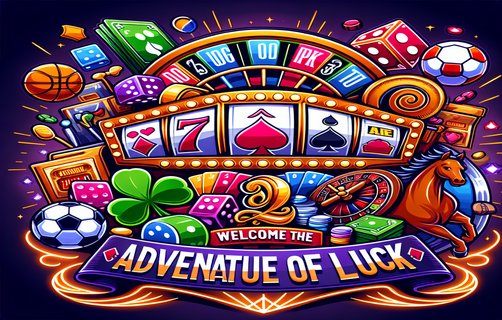Strategic Dynamics: Navigating Game Mechanics for Victory
स्ट्रैटेजिक डायनामिक्स: जीत के लिए गेम मैकेनिक्स को नेविगेट करना
In the realm of board games and strategy, understanding the intricate mechanics that dictate gameplay is crucial for both players and designers. The interplay of turn rotation, action limits, victory condition balancing, bonus markers, card draws, and action marker zones contributes to the depth and excitement of any game. This article delves into these elements, providing a comprehensive exploration of each.
Turn rotation is fundamental as it establishes the rhythm of gameplay. Players must navigate their turns efficiently, weighing strategic decisions against the actions available. Alternating turns fosters engagement while promoting fairness, reflecting a balance in competition. Effective turn management not only enhances player experience but also ensures that each player's choices hold significance within the game's narrative.
Action limits present another layer of complexity, dictating how many activities a player can undertake during their turn. This limitation encourages thoughtful planning and prioritization, compelling players to consider the implications of their actions carefully. Striking a balance in action limits can be the difference between a thrilling moment of victory and a frustrating stumble towards defeat.

Victory condition balancing is crucial in maintaining a fair competitive landscape. Different games employ varied victory conditions—some favor strategic accumulation of points, while others promote objectives that require collaboration or direct confrontation. Designers must skillfully calibrate these conditions, ensuring that no singular approach dominates gameplay while providing multiple pathways to success. A well-balanced victory condition keeps the tension high and players engaged until the final turn.
Bonus markers serve as incentives, rewarding players for specific achievements or milestones during gameplay. These markers can enhance the strategic depth of a game, prompting players to adjust their tactics to achieve these objectives. When implemented thoughtfully, bonus markers can significantly influence the pacing and flow of the game, adding layers of strategy that support diverse gameplay experiences.
Card draws introduce elements of chance that can drastically affect the game’s outcome. They add unpredictability, allowing for surprising twists that can turn the tide of play. Designers must carefully manage card distribution, ensuring that luck does not overshadow skill. This balance enhances the player experience by keeping everyone on their toes and maintaining excitement throughout the game.
Finally, action marker zones create dynamic territories on the game board, prompting players to compete for control over strategic areas. This fosters interaction and competition among players, as they vie not only for victory points but also for the benefits that come with controlling certain areas. The zones can shift the game’s strategy in myriad ways, compelling players to adapt their tactics continuously.
In conclusion, mastering these elements—turn rotation, action limits, victory condition balancing, bonus markers, card draws, and action marker zones—forms the foundation of an engaging and richly strategic game experience. Whether you are a player looking to sharpen your skills or a game designer crafting a new masterpiece, a thorough understanding of these mechanics will undoubtedly lead to thrilling moments and memorable victories.
बोर्ड गेम और रणनीति के क्षेत्र में, गेमप्ले को निर्धारित करने वाले जटिल मैकेनिक्स को समझना खिलाड़ियों और डिजाइनरों के लिए बहुत महत्वपूर्ण है। टर्न रोटेशन, कार्रवाई के सीमाएं, विजय स्थिति संतुलन, बोनस मार्कर्स, कार्ड ड्रॉ और एक्शन मार्कर ज़ोन का पारस्परिक खेल सभी गेम के गहराई और रोमांच में योगदान करता है। यह लेख इन तत्वों में गहराई से उतरता है, प्रत्येक का व्यापक अन्वेषण प्रदान करता है।
टर्न रोटेशन मौलिक है क्योंकि यह गेमप्ले की ताल को स्थापित करता है। खिलाड़ियों को अपने टर्न को प्रभावी ढंग से नेविगेट करना चाहिए, रणनीतिक निर्णयों को उपलब्ध क्रियाओं के खिलाफ तौलना चाहिए। वैकल्पिक टर्न व्यस्तता को बढ़ावा देता है जबकि प्रतिस्पर्धा में निष्पक्षता को भी बढ़ावा देता है, जो प्रतियोगिता में संतुलन को दर्शाता है। प्रभावी टर्न प्रबंधन न केवल खिलाड़ी के अनुभव को बढ़ाने में मदद करता है बल्कि यह भी सुनिश्चित करता है कि प्रत्येक खिलाड़ी के विकल्प गेम की कथा के भीतर अर्थ रखते हैं।

क्रिया की सीमाएँ जटिलता की एक और परत प्रस्तुत करती हैं, यह निर्धारित करते हुए कि एक खिलाड़ी अपने टर्न के दौरान कितनी गतिविधियाँ कर सकता है। यह सीमितता सोच-समझ कर योजना बनाने और प्राथमिकता तय करने के लिए प्रेरित करती है, खिलाड़ियों को अपने कार्यों के प्रभाव को ध्यान से विचार करने के लिए प्रेरित करती है। कार्रवाई की सीमाओं में संतुलन स्थापित करना रोमांचकारी विजय के एक क्षण और हार के एक निराशाजनक ठोकर के बीच का अंतर बन सकता है।
विजय स्थिति का संतुलन एक उचित प्रतिस्पर्धात्मक परिदृश्य बनाए रखने में महत्वपूर्ण है। विभिन्न खेल विभिन्न विजय स्थितियों का उपयोग करते हैं - कुछ रणनीतिक अंकों का संचय करने को प्राथमिकता देते हैं, जबकि अन्य सहयोग या सीधे मुकाबले की आवश्यकता वाले लक्ष्यों को बढ़ावा देते हैं। डिजाइनरों को इन स्थितियों को कुशलता से संतुलित करना चाहिए, यह सुनिश्चित करना चाहिए कि कोई एकल दृष्टिकोण गेमप्ले में हावी न हो जबकि सफलता के लिए कई मार्ग प्रदान करें। एक अच्छी तरह से संतुलित विजय स्थिति उच्च तनाव बनाए रखती है और खिलाड़ियों को अंतिम टर्न तक व्यस्त रखती है।
बोनस मार्कर्स प्रोत्साहन के रूप में कार्य करते हैं, गेमप्ले के दौरान विशिष्ट उपलब्धियों या मील के पत्थरों के लिए खिलाड़ियों को पुरस्कृत करते हैं। इन मार्करों के लिए खेल के रणनीतिक गहराई को बढ़ाने के लिए प्रेरित करने के लिए खिलाड़ियों को इन लक्ष्यों को प्राप्त करने के लिए अपनी रणनीतियों को समायोजित करने की आवश्यकता होती है। जब सटीक रूप से लागू किया जाता है, तो बोनस मार्कर गेम की गति और प्रवाह को महत्वपूर्ण रूप से प्रभावित कर सकते हैं, इन रणनीतियों को जोड़कर विविध गेमप्ले अनुभवों का समर्थन करते हैं।
कार्ड खींचने से अवसरों के तत्व को पेश किया जाता है जो खेल के परिणाम को नाटकीय रूप से प्रभावित कर सकता है। वे अनिश्चितता जोड़ते हैं, आश्चर्यजनक मोड़ की अनुमति देते हैं जो खेल के मोड़ को बदल सकते हैं। डिजाइनरों को कार्ड वितरण को सावधानीपूर्वक प्रबंधित करने की आवश्यकता होती है, यह सुनिश्चित करना कि भाग्य कौशल से अधिक न हो। यह संतुलन खिलाड़ी के अनुभव को बढ़ाता है, सभी को चौकस रखते हुए और गेम के दौरान उत्साह बनाए रखता है।
आखिर में, कार्रवाई मार्कर ज़ोन खेल बोर्ड पर गतिशील क्षेत्र बनाते हैं, खिलाड़ियों को रणनीतिक क्षेत्रों पर नियंत्रण के लिए प्रतिस्पर्धा करने के लिए प्रेरित करते हैं। यह खिलाड़ियों के बीच इंटरएक्शन और प्रतिस्पर्धा को बढ़ाता है, क्योंकि वे न केवल विजय अंकों के लिए बल्कि निश्चित क्षेत्रों पर नियंत्रण के साथ आने वाले लाभों के लिए भी प्रतिस्पर्धा करते हैं। ये क्षेत्र खेल की रणनीति को कई तरीकों से बदल सकते हैं, खिलाड़ियों को लगातार अपनी रणनीतियों को समायोजित करने के लिए मजबूर करते हैं।
निष्कर्ष में, इन तत्वों - टर्न रोटेशन, कार्रवाई की सीमाएँ, विजय स्थिति संतुलन, बोनस मार्कर्स, कार्ड ड्रॉ, और कार्रवाई मार्कर ज़ोन - को समझना एक परिणामी और समृद्ध रणनीतिक खेल अनुभव की नींव बनाता है। चाहे आप अपने कौशल को सुधारने के लिए एक खिलाड़ी हों या एक गेम डिजाइनर जो एक नई रचना कर रहे हों, इन मैकेनिक्स की गहन समझ निश्चित रूप से रोमांचक क्षणों और यादगार विजय की ओर ले जाएगी।

comments
GameGuru99
This article beautifully explains the intertwining mechanics of strategizing in games. Well done!
PlayerOne567
Great insights! I never thought action limits could be so impactful.
BoardGameWhiz
As a game designer, I find this breakdown valuable for my next project!
CardShark90
I absolutely love how you addressed card draws. Perfect balance is key!
TacticalMind
Fantastic read! I now feel inspired to revisit some of my favorite games with a fresh perspective.
StrategistSally
The concept of action marker zones is fascinating! I can see how it changes the complexity of the game.